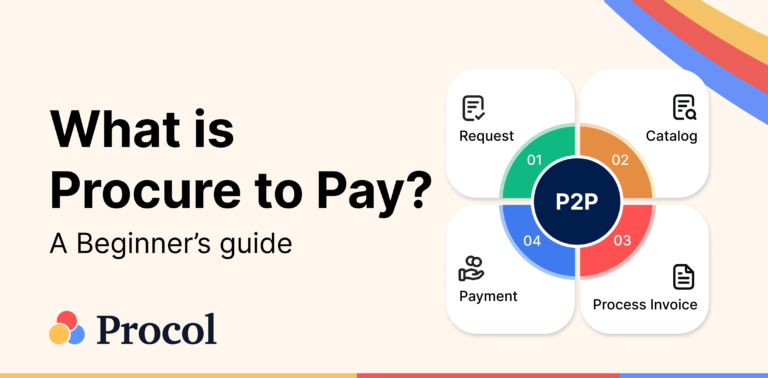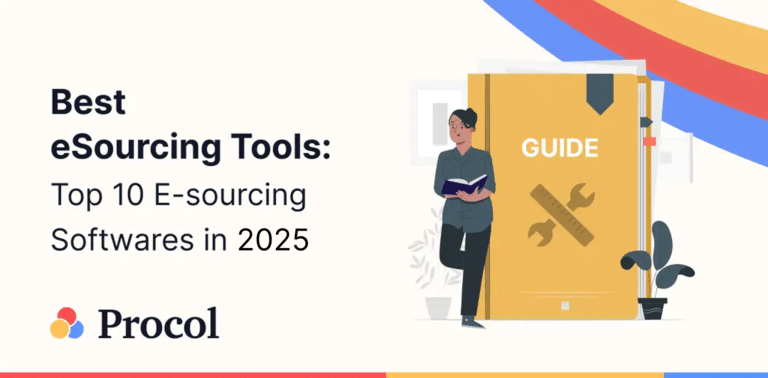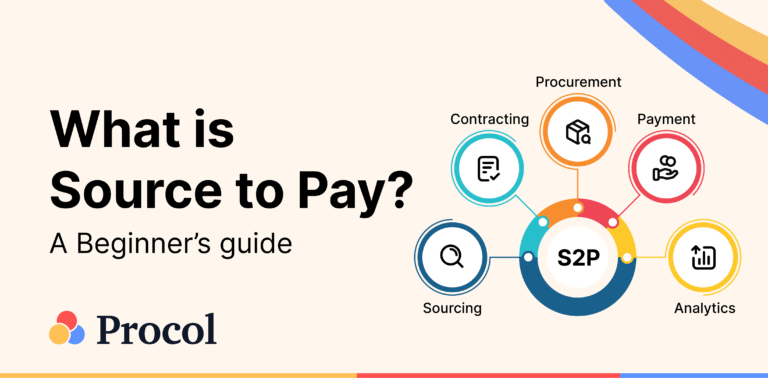Procol • April 15, 2025
Mastering Supplier Risk Management: Essential Strategies

Introduction
In the current era of globalization and complicated supply chains, businesses seeking to maintain resilience and competitiveness must grasp supplier risk management. The complexities of vendor risk management involve anticipating potential vulnerabilities that could impair confidence and disrupt operations in addition to addressing current risks. Organizations can maintain their operational integrity, uphold customer satisfaction, and preserve their brand reputation by using supply chain risk management. By planning forward, businesses are better equipped to handle unforeseen circumstances and stay on a path toward continuous improvement and achievement.
What is supplier risk management?
Supplier risk management identifies, evaluates, and controls the risks associated with working with external vendors. It is the risk management plan that a company must implement to safeguard the enterprise from potential threats, including issues with quality, financial losses, and other risks. By promptly minimizing the effect of supplier-related issues, organizations can reduce their exposure to the risk of geopolitical crises, legislative changes, natural disasters, operational disruptions, or financial difficulties.
What is the Importance of supplier risk management?
A key component of any organization’s risk management strategy is supplier risk management, or SRM, especially regarding direct procurement procedures. Coordination with suppliers is required to obtain the goods and supplies required for ongoing operations. The necessity for various suppliers increases as a business grows, bringing additional risks that must be effectively managed.
Vendor risk management intends to reduce any financial losses or disruptions to business operations resulting from problems with third-party suppliers, including insolvency, poor quality, delayed deliveries, or unethical behavior.
Check out some of the reasons why a vendor risk management program is essential for a business:
- Supplier risk management can help identify and mitigate financial loss risks.
- It lets an organization adhere to all regulatory requirements.
- A vendor risk management program enables an organization to identify and stop working with suppliers that may pose a reputational risk.
- Delays in suppliers may lead to delays or shortages of materials; thus, SRM helps find suppliers who consistently deliver high-quality goods and services within reliable timelines.
What roles within a company play a part in supply chain risk management?
Supply chain risk management involves various roles in an organization. Specific supply chain risk assessment teams execute and manage the strategies for specifying, assessing, mitigating risk, and monitoring supply chain resilience.
Moreover, the procurement teams are responsible for determining potential suppliers and managing the current ones to ensure they meet delivery standards and quality.
Furthermore, the operation teams manage all the inventory, production, and logistics work, ensuring efficiency and resilience.
IT teams in a company work to implement and maintain technology solutions that support SCRM processes.
Types of Supplier Risks
Financial difficulties may substantially affect a supplier’s performance capacity, leading to supply chain interruptions. Financial risk management is crucial during the procurement due diligence to reduce such problems. Financial risk analyses are necessary for businesses to avoid issues with current vendors, particularly those with contractual commitments.
Financial Risk:
One of the challenging risks to forecast and manage is economic instability in suppliers, which can put an organization’s operations in danger. Organizations must implement tactics to mitigate these risks, like monitoring suppliers’ financial health and guaranteeing adherence to contractual obligations.
Ethical Risk:
Vendors involved in immoral activities, like using child labor or violating other human rights laws, pose severe ethical threats. These actions may damage a business’s reputation and brand. Strict screening and ongoing supplier monitoring to guarantee adherence to ethical norms are necessary to minimize ethical concerns.
Environmental Risk:
Suppliers’ operations may cause environmental deterioration through pollution and the unsustainable use of resources. Businesses are increasingly expected to answer for their suppliers’ environmental policies.
Political and Economic Risks:
Suppliers based in politically or economically unstable areas might impact the dependability and prices of goods and services. Economic factors can affect suppliers’ pricing strategies and operational capacities, while political developments might result in legislative changes that impact supply chains. To mitigate these risks, supplier base diversification and cautious selection are essential.
What Are Supply Chain Risks?
Supply risks involve the risks that might come during the business supply chain process. There are two types of supply chain risks, internal and external that may disrupt an organization’s supply chain:
| External Risk | Internal Risk |
|---|---|
| External risks come from outside the business. This means these risks are hard to predict and require more resources to overcome. | Internal risks are within an organization’s control as they can be identified and monitored using supply chain risk assessment software, IoT capabilities, etc. |
| Demand Risks: It occurs if there is an error in calculating the product demand. It is due to a need for more attention to purchasing trends or unpredictable demand. | Planning and Control Risks: These risks are caused by incorrect forecasting and assessments and unsuccessfully planned production and management |
| Business Risks: It occurs if any unforeseen changes take place with one of the entities that run your supply chain smoothly. | Mitigation and Contingency Risks: These risks arise if your business doesn’t have a contingency strategy for supply chain disruptions. |
| Supply Risks: It occurs when the raw materials the business depends on are not delivered on time or at all, disrupting product, flow, materials, and parts. | Manufacturing Risks: These risks refer to the likelihood that a critical element or phase of your workflow could be disrupted, causing processes to go off schedule. |
| Environmental Risks: These supply chain risks occur due to political, governmental, social-economic, or environmental issues that affect supply chain timing. | Business Risks: These risks result from troubles with standard personnel, reporting, management, and other business processes. |
Five sources to manage supply chain risks
There are external and internal risks to the organization, and these are as follows:
| Risk Type | Sources of Supply Chain Risk | Definition |
|---|---|---|
| Internal risk | Supply risk | Potential or actual disruptions to the flow of product or information originating within the network upstream of the focal firm can significantly influence the organization’s ability to perform. |
| Demand risk | It means product flow disruptions within the supply chain that impact an organization’s operating capability. The description includes information and cash. | |
| Control | Control risk arises from the application or misapplication systems and procedures governing an organization’s processes and resources, such as batch sizes and safety stock policies. | |
| Process | It is the series of value-added and managerial activities undertaken by the company. Process risk relates to troubles in crucial business processes that allow the organization to work. | |
| External risk | Environmental risk | The risk associated with unmanageable events may influence the firm directly or through its suppliers and customers. Environmental risks include earthquakes, storms, customs procedures, and changes in legislation. |
How do we reduce supply chain risks?
By combining these strategies, businesses may protect themselves from possible disruptions, handle vendor risk management proactively, and keep their supply chains operating smoothly.
- Identify: Businesses should look for any potential issues or flaws that could compromise the stability of their whole supply chain.
- Assess: After identifying possible vulnerabilities, businesses can assess their likelihood of occurrence and potential effects on the supply chain. Research and data can aid in the assessment of supply chain risk. Quantitative and qualitative approaches, such as scenario analysis, risk scoring, and expert opinion, can help compare historical data and forecasting in the context of current metrics and risk variables.
- Mitigate: After identifying and examining the risks, businesses may develop strategies to address the most critical problems swiftly. Risk mitigation techniques include increasing communication, broadening the supplier base, better managing inventories, investing in technology, and creating backup plans.
- Monitor: Since SCRM is an ongoing process, businesses should closely monitor supply chain activities and conduct routine reviews of SCRM policies and processes. This strategy may include monitoring KPIs, conducting audits, cultivating a solid rapport with suppliers, and involving stakeholders. The objectives are to limit risk exposure and ensure educated decision-making.
Benefits of Effective Supplier Risk Management
Effective supplier risk management offers significant advantages beyond a business’s operational aspects, influencing profitability, sustainability, compliance, and reputation. These benefits ensure long-term success in today’s complex market environments.
Profitability and Sustainability:
Businesses can reduce costs without compromising quality by optimizing inventory levels and identifying inefficiencies in the supply chain. Over time, these cost savings contribute to the company’s overall financial health, promoting long-term sustainability.
Compliance and Reputation:
Effective management of supplier risks also ensures compliance with relevant laws and industry standards, which is vital in protecting operations and reputations. Transparent, risk-based approaches address the due diligence process by company policies and regulatory requirements. This helps avoid costly penalties and legal issues and prevents reputational harm from negative associations or media coverage of unethical practices within the supply chain.
How can technology contribute to supply chain risk management?
Technology plays a crucial role in supply chain risk management. Relying on manual processes to manage supply chains and the associated risk leads to a lack of scalability, decreasing businesses’ revenue.
Implementing technologies lets the organization understand supplier risk management, as it can quickly respond to unexpected changes.
Check out below the range of functionalities for organizations that technology provides:
- An advantage of using technology as part of a supplier risk management strategy is that it helps businesses monitor supplier performance in real-time. It provides accurate and up-to-date data that reflects the supplier’s current performance.
- Integrating automation in a supplier risk management strategy lets the organization streamline operations and enhance efficiency by reducing human error.
- Implementing data analytics technology provides an organization with vast amounts of supplier data, enabling it to identify trends and mitigate risk. It is also used to forecast future supplier risk.
- Blockchain technology can increase supply chain traceability and transparency, which will facilitate tracking the flow of products while confirming their legitimacy.
- Cloud computing may offer scalable data sharing and storage solutions that facilitate communication and cooperation at every supply chain step.
Step-by-Step Guide to Manage Supplier Risk
An effective vendor risk management program is essential to maintaining an organization’s honesty and profitability. This comprehensive, step-by-step guide will help businesses navigate supplier risk management challenges.
1. Identify Potential Risks
Companies must begin by determining the risks that can appear at various phases of the supply chain. This covers monetary challenges, poor quality control, natural calamities, and reputational risks associated with governance, social, and environmental (ESG) challenges.
2. Assess the Severity and Likelihood of Risks
It is crucial to evaluate risks’ seriousness and probability of occurrence after they have been recognized. This phase assists in prioritizing risks according to their possible impact on the organization by allocating resources for risk mitigation efforts.
3. Develop Risk Mitigation Plans
Organizations should create thorough plans for risk mitigation after they have a firm grasp of the hazards. These plans should cover various topics, including supplier onboarding, teamwork, lifecycle management, and external risks like fraud, theft, and natural disasters.
4. Establish Controls and Processes
Effective supplier risk management requires robust controls and processes. Diversifying supplier bases to minimize reliance on a single source and enforcing stringent compliance checks to guarantee suppliers follow legal and regulatory requirements should reduce the identified risks.
5. Monitor Suppliers for Compliance
It is crucial to monitor suppliers to ensure they follow the rules regarding procedures and controls. This stage entails conducting routine audits, monitoring performance about compliance indicators, and keeping lines of communication open with suppliers to resolve any difficulties quickly.
6. Track and Report on Risk Management Effectiveness
Businesses should monitor and regularly report on the success of their vendor risk management initiatives. This entails evaluating the results of risk mitigation initiatives and modifying action plans as needed to enhance risk management procedures.
Best Practices for Supplier Risk Assessment
An essential part of successful supplier risk management is supplier risk assessment. It covers a range of strategies that companies can use to recognize and manage the risks related to doing business with specific suppliers.
- Use of Scoring Systems and Criteria Lists: Compile a thorough list of requirements, including past performance, financial stability, quality assurance, and delivery schedules. Then, use this list to build a scoring system that will enable you to rate each supplier according to the degree of risk they pose. Risk rises with a higher score.
- Make a Vendor Risk Assessment Matrix: Using a vendor risk assessment matrix to identify and manage supplier risks systematically. Businesses can use this tool to rate suppliers based on financial stability, delivery dependability, product or service quality, and customer happiness.
- Ongoing Monitoring and Data Access: To guarantee that suppliers follow legal requirements, make informed assessments, provide access to supplier data, and carry out ongoing monitoring operations.
- Tailored Vendor Risk Assessment Techniques: Not all approaches to supplier risk assessment are practical. When developing your methodology for evaluating vendor risk, consider the number of suppliers and challenges unique to your business.
- Collaborative Risk Identification: Other stakeholders, including compliance managers and procurement teams, are involved in the vendor risk assessment. This collaborative approach helps identify several hazards.
- Get Ready for Supply Chain Risk Assessment Challenges: Recognize and prepare for challenges such as suppliers’ reluctance to provide information and the complexity of modern supply chains, which may involve multiple partners in multiple nations.
How is supply chain risk management related to sustainability?
Sustainability and supply chain risk management have a close connection in several ways.
1. Resilient Supply Chain:
Ethical sourcing, the use of renewable energy sources, waste minimization, and other sustainable practices in the supply chain all help to create a more robust and resilient network. By incorporating sustainability into vendor risk management tactics, businesses can reduce the consequences of interruptions and enhance their long-term sustainability.
2. Environmental Impact Mitigation:
Sustainable supply chain strategies aim to reduce the environmental impact of activities, such as cutting back on waste production and carbon emissions. By controlling supply chain risks related to environmental variables, businesses can minimize adverse environmental effects while ensuring the continuity of their operations.
3. Regulatory Compliance:
Ethical sourcing, labor laws, and environmental protection regulations frequently align with sustainable supply chain strategies. Sustainability standards and laws must be followed to manage risks in the supply chain effectively.
4. Long-Term Viability:
By addressing environmental, social, and governance (ESG) aspects, including sustainability in risk management, promotes long-term viability and competitiveness. Businesses that proactively handle supply chain sustainability risks will be better able to weather changing market and regulatory trends and prosper.
5. Stakeholder Relationships:
Sustainable supply chain methods can improve connections with stakeholders, such as consumers, investors, and communities, by exhibiting a dedication to ethical and responsible business practices. Managing sustainability risks in the supply chain facilitates building stakeholder confidence and trust.
What are the challenges of supply chain risk management?
Implementing supply chain risk management (SCRM) takes a lot of work for businesses. Check out the challenges mentioned below:
- Due to the extreme complexity of modern global supply chains, meticulous records of every element during the process are challenging to keep.
- A business can only accurately and effectively analyze risks if it can access reliable data about its suppliers. Some suppliers might hesitate to disclose data due to worries about privacy or the possibility of losing their competitive edge. Furthermore, they might not be open to implementing new procedures or changing current ones, even if they offer sufficient evidence to detect risks.
- Implementing new technology, providing training, and conducting in-person monitoring calls for financial outlays that can prove to be unaffordable for smaller companies. The amount of money needed to maintain due diligence across all stakeholders increases with the number of parties engaged.
How Procol provide supplier risk management?
Procol is leading the way in changing how we manage suppliers, bringing together efficiency and smart insights. It offers interactive supplier portal software that is easy to use, can handle all the paperwork, create new suppliers, and check their details without you lifting a finger. With smart risk management tools, it can spot potential issues before they happen, make reports showing how your suppliers are doing, and connect with your existing business software to keep things running.
Conclusion
Effective supplier risk management and supply chain risk assessment are protective measures and strategic advantages that can enhance profitability, sustainability, compliance, and reputation. By adopting best practices, organizations can fortify their supply chains against disruptions, ensure adherence to ethical standards, and maintain competitiveness in the complex landscape of modern business.
Explore more from Procol
Discover expert tips, how-to guides, industry insights, and the latest procurement trends.

What is Procure-to-pay (P2P)? An Ultimate Guide
Procure to pay is the process from procurement of materials needed...

Best eSourcing Tools: Top 10 eSourcing Software in 2025
Discover top 10 e-sourcing tools and esourcing platforms necessary for efficient...

What is Source-to-pay in 2025? An Ultimate Guide
Source to pay is the process of sourcing vendors to procure...











